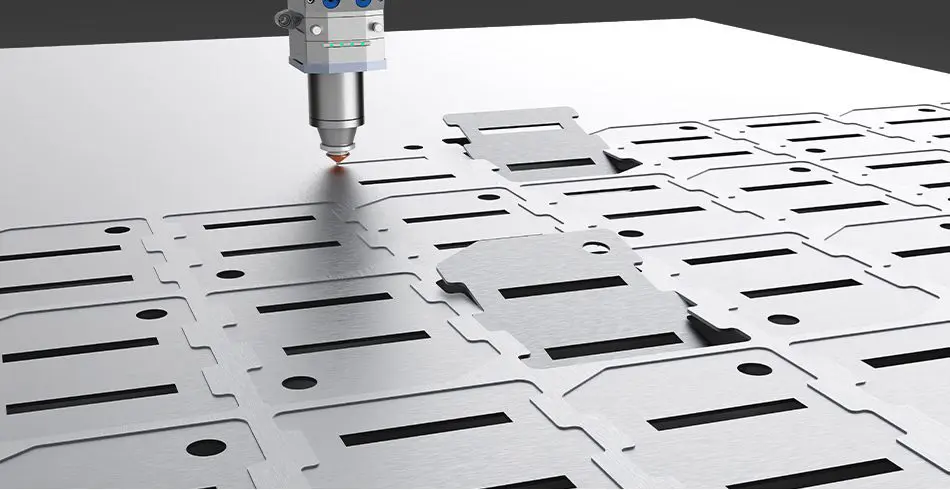In a world where efficiency and speed are paramount, laser cutting machines play an important role in production. Whether you're using a fiber laser cutting machine or comparing it to a plasma cutting machine, it's critical to understand your options. In this comprehensive guide, we unravel the wonders and complexities of laser cutting technology, helping you make informed decisions about your industrial needs.
- What is Laser Cutting Machine
- The Importance of Laser Cutting in Modern Manufacturing
- How Does a Laser Cutting Machine Work?
- Components of a Typical Laser Cutting Machine
- Types of Laser Cutting Machines
- Laser cutting machine suitable for various industry applications
- Safety Measures and Guidelines
- How to Choose the Right Laser Cutting Machine
- Where Can Buy a Right Laser Cutting Machine
- How to Choose a Right Laser Cutting Machine Manufacturer
- Fiber Laser Cutting Machine vs Plasma Cutting Machine
1.What is a Laser Cutting Machine?
A Laser Cutting Machine is a tool that uses a concentrated beam of light – the laser – to cut or engrave materials. The laser beam is generated in the machine's resonator and then directed towards the material via mirrors. When this intense beam of light meets the surface of the material, it burns, melts, or vaporizes it, resulting in a precise and clean cut.
Manufacturers, especially Laser Cutting Machine Manufacturers, vouch for its unparalleled accuracy and consistency. The technology behind it is not just limited to cutting; it extends to engraving, marking, and etching on a myriad of materials like metal, plastic, wood, and even paper. One of its more advanced iterations, the Fiber Laser Cutting Machine, is particularly adept at processing metals, offering higher speeds, precision, and energy efficiency.
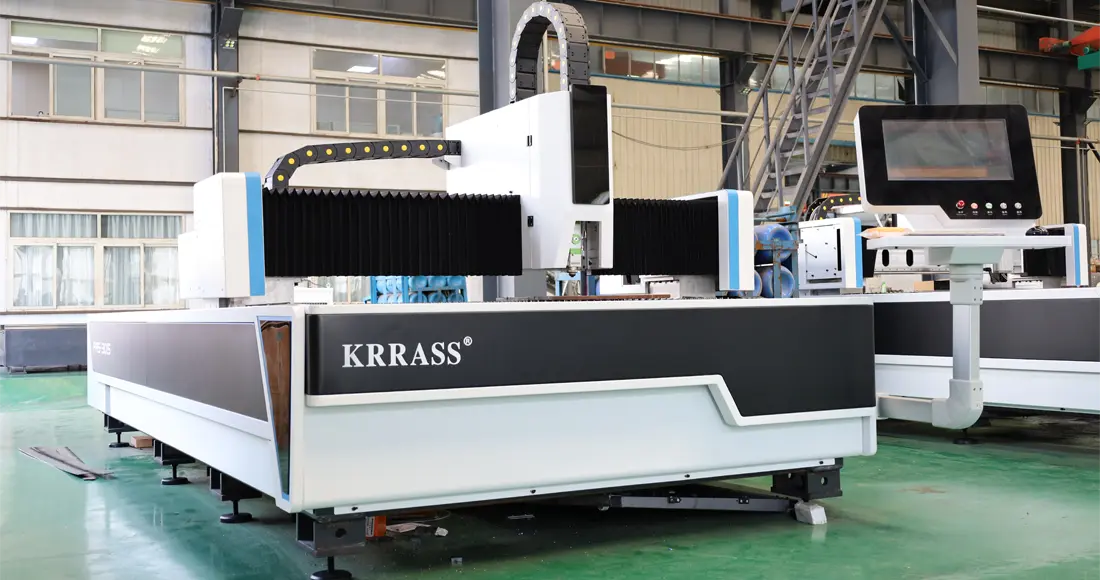
2.The Importance of Laser Cutting in Modern Manufacturing
There was a time when traditional cutting methods like plasma cutting dominated the manufacturing landscape. Fast forward to today, and laser cutting—especially Fiber Laser Cutting Machines—has not just entered the scene but has become a pivotal player. So, why has it become so indispensable in modern manufacturing?
First off, let's talk about precision. In manufacturing, even a millimeter can make a difference. Traditional methods often face challenges in maintaining consistent accuracy, especially for intricate patterns and designs. This is where Laser Cutting Machines excel. They offer high precision levels, down to the smallest detail, ensuring that every cut is just as accurate as the last.
Speed is another vital factor. Time is money, and in an industry where every second counts, the rapid cutting speeds of Laser Cutting Machines are a godsend. When compared to other cutting methods, such as plasma cutting, laser cutting is often faster for many applications, reducing lead times and increasing production capacity.
Next up is versatility. While traditional cutting methods may require different tools for different materials, a Laser Cutting Machine can handle a variety of materials—be it metal, plastic, or wood—without requiring a tool change. This adaptability makes it an invaluable asset in today's dynamic manufacturing environment.
Operational costs are something no manufacturer can ignore. The Laser Cutting Machine wins here too, offering long-term cost-effectiveness. Less waste material, lower maintenance costs, and reduced energy consumption contribute to a lower total cost of ownership, making laser cutting a financially smart choice.
The benefits don't stop there. The technology is continuously evolving. Leading Laser Cutting Machine Manufacturers are always innovating, pushing the boundaries of what's possible, thereby keeping the manufacturing sector one step ahead.
3.How Does a Laser Cutting Machine Work?
Understanding the workings of a Laser Cutting Machine isn't just for the tech-savvy or engineers among us. If you're in manufacturing, it's crucial to grasp at least the basic mechanics of this versatile tool. It can mean the difference between merely using the machine and truly optimizing it for your specific needs. So, how does it operate?
Basic Principles: Light Amplification and Stimulated Emission
To grasp how a Laser Cutting Machine works, it's vital to understand the fundamental principles of laser technology itself: Light Amplification by Stimulated Emission of Radiation, or LASER for short. In layman's terms, it's a method to amplify light, and it all starts at the atomic level.
In the machine's resonator, atoms are energized to a higher state. When these atoms return to their normal state, they emit photons (light particles). Here’s where the 'Stimulated Emission' part comes in. These photons interact with other energized atoms, causing them to emit more photons of the same frequency, phase, and direction. This chain reaction results in a highly concentrated beam of light.
So, how does this apply to cutting or engraving material? Well, this concentrated beam is directed through a lens onto the material's surface. The energy from the laser beam heats up a small area of the material, either melting, burning, or vaporizing it. This is how the precise cuts or engravings are made. Depending on the complexity and the material, the laser's settings like speed, power, and focus can be adjusted.
If you're more into metals, then a Fiber Laser Cutting Machine is what you’d be looking at. It uses fiber optics for better focus and energy efficiency, making it an excellent choice for metal cutting applications.
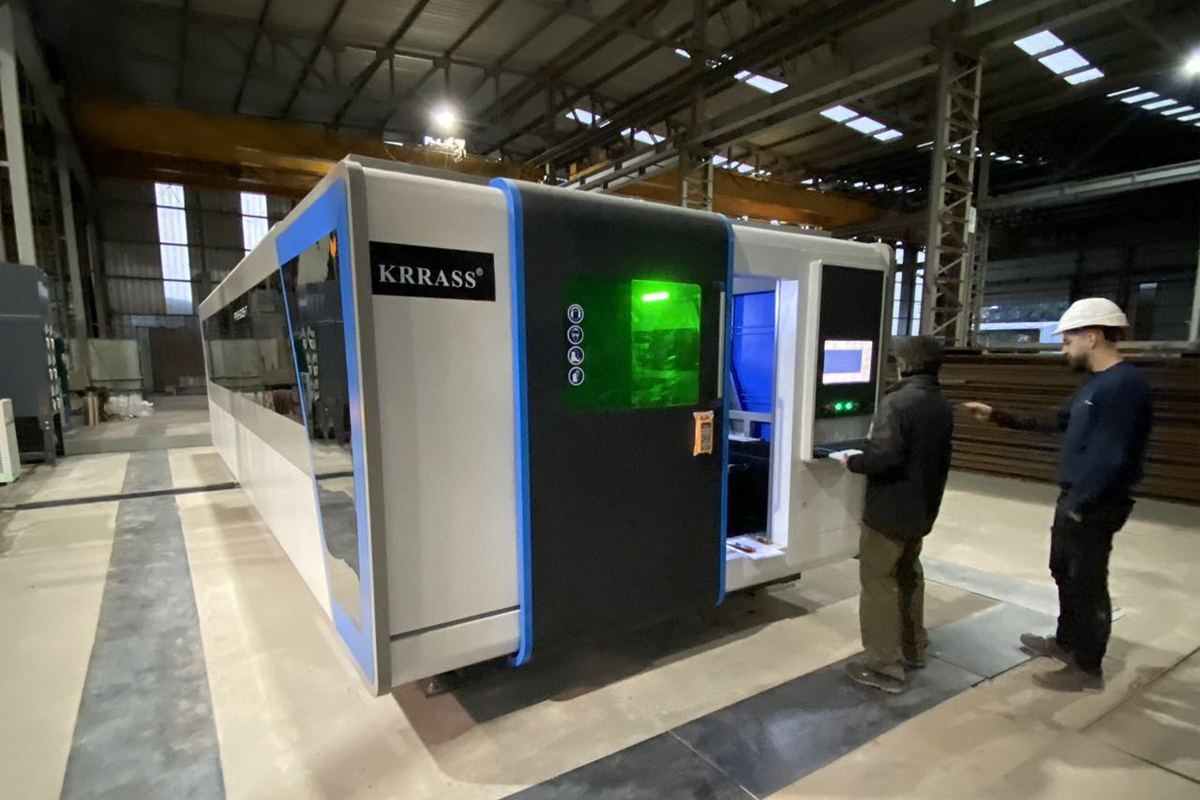
4.Components of a Typical Laser Cutting Machine
A Laser Cutting Machine is not just a box with a powerful light; it's a sophisticated assembly of components working in unison to deliver that extraordinary precision we've been talking about. Knowing these components can help you understand the machine's capabilities and limitations. So, what are the key parts?
Laser Resonator
The heart of the machine, the Laser Resonator, is where the magic starts. This is where the amplification of the light occurs. In simpler terms, the resonator takes normal light and turns it into a concentrated laser beam. Laser Cutting Machine Manufacturers put a lot of engineering into this part to ensure it's capable of generating a powerful and precise beam. In a Fiber Laser Cutting Machine, for example, fiber optics are utilized for greater focus and energy efficiency.
Cutting Head
The Cutting Head is where the rubber meets the road, or more accurately, where the laser meets the material. It's this component that directs the laser beam onto the surface of the material to be cut or engraved. The cutting head usually contains lenses to focus the laser beam and may also have a system to blow away the melted or vaporized material. It's crucial for achieving those clean, precise cuts we all desire.
Drive System
Last but not least, the Drive System moves the cutting head along the X, Y, and sometimes Z axes. Whether you're cutting intricate shapes or straightforward lines, it's the Drive System that ensures the cutting head gets to where it needs to be, swiftly and accurately. This is often achieved through servomotors and precise guide rails.
5.Types of Laser Cutting Machines
One size doesn't fit all, especially in the diverse world of manufacturing. Similarly, not all Laser Cutting Machines are created equal. There are different types, each with its unique features, strengths, and limitations. Understanding these can help you make an informed decision based on your specific requirements. So, let's dive in!
CO2 Laser Cutting Machine
The CO2 Laser Cutting Machine is perhaps the most commonly used type. It's versatile and well-suited for cutting a wide variety of materials like plastic, wood, and some metals. It uses a carbon dioxide gas mixture to produce the laser beam. It's an excellent choice for applications requiring high cutting speeds and a clean finish.
Fiber Laser Cutting Machine
The Fiber Laser Cutting Machine is the go-to for metal cutting. With a beam generated through fiber optics, it offers greater energy efficiency and excellent focus. It's an ideal choice for intricate metalwork and industries where precision is paramount.
Nd:YAG Laser Cutting Machine
Nd:YAG stands for Neodymium-doped Yttrium Aluminum Garnet. This type of laser is best suited for high-volume, low-thickness materials. It's known for its high-speed capabilities but generally has a lower power output compared to CO2 and Fiber Lasers.
Diode Laser Cutting Machine
Diode Lasers are often used in smaller, portable cutting machines. While they don't offer the same level of power or precision as other types, they are cost-effective and versatile, making them suitable for smaller projects or hobbyist applications.
Comparison: Strengths and Weaknesses
So, how do you choose? Well, if you're cutting metals and need high precision, a Fiber Laser Cutting Machine is likely your best bet. On the other hand, if you need versatility for a range of materials, a CO2 machine might be more up your alley. Nd:YAG is for those who prioritize speed, while Diode Lasers are best for smaller, more straightforward projects.
6.Laser Cutting Machine Suitable for Various Industry Applications
In today's ever-changing landscape of manufacturing and design, the Laser Cutting Machine has become a versatile tool serving multiple industries. While you may think of it as highly specialized equipment, its applications are remarkably varied. Let's take a look at how different sectors benefit from laser cutting technology.
Automotive Manufacturing
In the automotive sector, precision and efficiency are paramount. From engine parts to intricate dashboard components, laser cutting ensures unparalleled accuracy and speed. Plus, with the high adaptability of Fiber Laser Cutting Machines, manufacturers can work with a variety of metals, significantly optimizing the production process.
Aerospace
When you're flying thousands of feet up in the air, there's no room for error. Aerospace components must meet stringent quality standards, and that's where laser cutting shines. The high precision and ability to cut complex shapes make it a preferred choice for everything from aircraft skins to engine components.
Electronics
Ever wonder how your smartphones get sleeker yet more powerful each year? Laser cutting plays a pivotal role. It allows for precise cutting of circuit boards, insulation materials, and even the glass or metal for the housing, facilitating the miniaturization of electronic devices.
Fashion and Textiles
Yes, you heard it right! Laser cutting is not just for hard materials; it's also revolutionizing the fashion and textile industries. From creating intricate lace patterns to custom leather designs, laser cutting offers a high level of customization and speed, something highly desirable in fast-paced fashion cycles.
Medical Devices
In the medical field, laser cutting is literally a life-saver. From surgical instruments to implants, the high precision of laser cutting ensures that medical devices meet the strictest safety and quality guidelines. Especially with the advent of Fiber Laser Cutting Machines, finer and more intricate cuts are possible, making it indispensable in modern medicine.
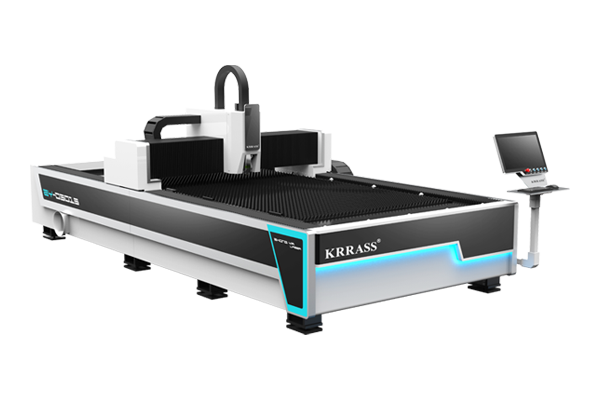
7.Safety Measures and Guidelines
While Laser Cutting Machines are highly efficient and precise, they also come with their set of safety concerns. Safety goggles are a must to protect the eyes from the intense laser beam. Additionally, proper training should be provided to operate these machines safely, including emergency shutdown procedures and the handling of materials post-cut.
Environmental Impact and Sustainability
It's not just about cutting; it's also about caring for our planet. Most Laser Cutting Machine Manufacturers are working towards making their machines more energy-efficient and reducing waste. Advances in Fiber Laser Cutting Machines, in particular, have made them more energy-efficient than their CO2 counterparts.
The Economics of Laser Cutting
From the cost of the machinery to labor and materials, the economics of laser cutting is a multi-faceted subject. Yet, it's essential to consider these aspects to evaluate the real worth of investing in laser cutting technology for your business.
Cost Factors: Machinery, Labor, and Materials
The initial investment in a Laser Cutting Machine can be significant. However, it is often offset by the efficiency, speed, and quality of the cuts, reducing labor and material costs in the long run.
Return on Investment: Short-Term and Long-Term Analysis
When assessing the ROI of a Laser Cutting Machine, one must consider both short-term and long-term gains. Short-term ROI may involve immediate operational efficiency and reduction in waste. Long-term ROI considers factors like durability, reduced maintenance costs, and the versatility of applications the machine can handle, which often makes it a worthy investment.
8.How to Choose the Right Laser Cutting Machine
Choosing the right Laser Cutting Machine for your business is like picking the perfect car; it's a long-term investment that requires careful consideration of your specific needs and available options. Below are some key points to guide your decision-making process.
Assessing Your Needs
Before you even look at the specs, take a step back and assess what you really need. What materials will you be cutting most often? How complex are the designs? What is the volume of production? Once you have a clear understanding of your requirements, it's easier to narrow down your options.
Key Features to Look For
Once you've assessed your needs, it's time to look at the features. Here are some key aspects to consider:
- Power and Speed: This is crucial if you're working with thicker materials or need high-speed cutting.
- Software Compatibility: Ensure that the machine's software is user-friendly and compatible with your existing systems.
- Reliability: Check for warranty and maintenance services; this machine is an investment, after all.
- Versatility: Can it handle different types of materials and intricate designs? A Fiber Laser Cutting Machine offers versatility in cutting various metals.
- Safety Features: Adequate safety measures, like emergency stops and protective casing, are non-negotiable.
More Reading: How to choose a fiber laser cutting machine?
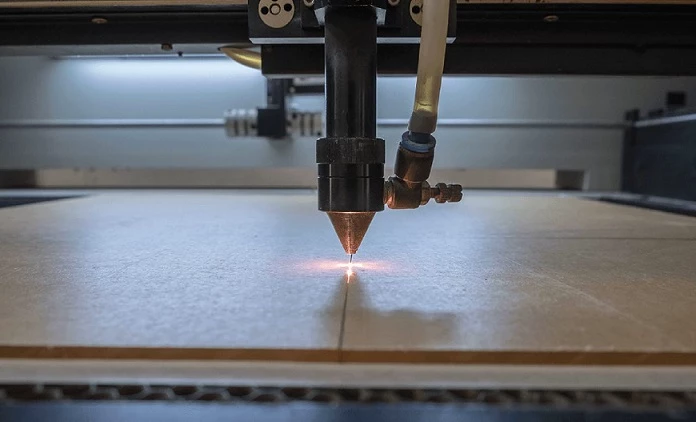
9.Where Can You Buy the Right Laser Cutting Machine?
After going through the nitty-gritty of what to look for, the next logical question is, where do you find this cutting-edge technology that suits your needs? You have several avenues to explore:
- Direct from Manufacturer: Often, purchasing directly from a reputable Laser Cutting Machine Manufacturer will ensure you get the most tailored solution. They usually offer customization, after-sales support, and sometimes even financing options.
- Authorized Dealers: An authorized dealer can offer a variety of brands and models, along with the perk of quicker delivery. Just make sure they have a partnership with reputable manufacturers.
- Online Platforms: Websites specializing in industrial machinery can provide numerous options to compare, although it’s often harder to gauge the quality and post-sales service.
- Trade Shows and Expos: These events provide an excellent opportunity to see the machine in action, ask questions, and directly negotiate terms.
- Local Distributors: Local suppliers can offer quicker delivery and potentially lower shipping costs, but their inventory might be limited.
Regardless of where you choose to buy, it's imperative to check the credibility of the supplier. Look for customer reviews, ask for client references, and if possible, visit the facility to see the machine in operation. This is especially true if you're leaning towards specialized machines like Fiber Laser Cutting Machines for specific applications.
When looking to invest in a Laser Cutting Machine, don't just focus on the initial purchase price. Consider the long-term value the machine will bring to your business. From the versatility in applications to the quality of the cuts, the right machine can significantly elevate your operational efficiency.
10.How to Choose the Right Laser Cutting Machine Manufacturer
You wouldn't buy a car without researching the manufacturer, and the same principle applies to purchasing a Laser Cutting Machine. Your manufacturer isn't just a supplier; they're a partner in your business' success. So how do you choose a reputable Laser Cutting Machine Manufacturer? Here are some key considerations:
Quality and Consistency
First and foremost, the quality of the machines should be exceptional. Consistency is also key. Ask for references or case studies that demonstrate the manufacturer's track record.
After-Sales Support and Warranty
A reliable manufacturer offers excellent after-sales service, including a comprehensive warranty, timely maintenance, and spare parts availability.
Technological Innovation
In a field as advanced as laser cutting, technological innovation is crucial. Manufacturers who invest in R&D are more likely to offer machines that meet current market needs, including Fiber Laser Cutting Machines and more.
Customization Capabilities
Every business is unique, and your laser cutting needs may be too. The ability to customize machines according to your specific requirements is a significant advantage.
Transparency and Communication
Good manufacturers keep the lines of communication open, offering transparency in terms like pricing, delivery timelines, and any potential delays.
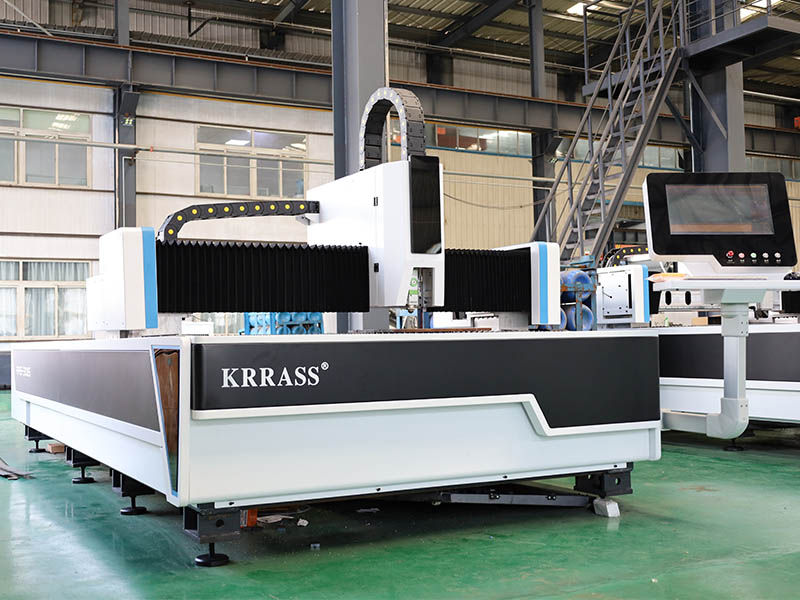
11.Fiber Laser Cutting Machine vs Plasma Cutting Machine
When it comes to cutting metals and other materials, two technologies often come up for discussion: Fiber Laser Cutting Machines and Plasma Cutting Machines. While both have their merits, understanding the key differences can help you make an informed decision. So, let's break it down:
Precision and Cut Quality
Fiber Laser Cutting Machines are renowned for their precision. They can achieve intricate cuts with a high degree of accuracy. Plasma machines, while effective, generally can't match the precision of a Fiber Laser Cutting Machine.
Cutting Speed
Laser cutters, particularly Fiber Laser Cutters, tend to work faster when cutting thinner materials. On the other hand, Plasma Cutters are often quicker when dealing with thicker materials.
Material Versatility
Fiber Laser Cutters are more versatile in terms of the types of materials they can cut, including metals, plastics, and even some ceramics. Plasma cutters are typically more limited to conducting materials.
Energy Efficiency
Fiber Laser Cutting Machines are generally more energy-efficient compared to Plasma Cutting Machines, which is an important consideration for the environmentally conscious and for those looking at long-term costs.
Cost
Plasma Cutting Machines are usually less expensive upfront, but the total cost of ownership can be higher due to factors like lower precision, slower speed on thin materials, and higher energy consumption.
More Reading: What is the difference between fiber laser cutting machine and plasma cutting machine?
Conclusion
So there you have it, the A to Z of laser cutting machines. Whether you're in automotive manufacturing, aerospace, or any other industry, the right laser cutting machine can be a game-changer. Looking for top-notch quality and reliable service? Krrass, as a leading Laser Cutting Machine Manufacturer, offers a variety of state-of-the-art options including Fiber Laser Cutting Machines. Visit our website www.krrass.com to explore our extensive range of sheet metal machinery.
Read More:
12000W Fiber Laser Cutting Machine Parameters
15000W Fiber Laser Cutting Machine Parameters
